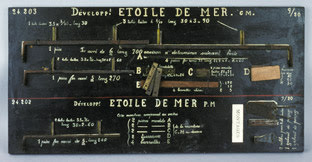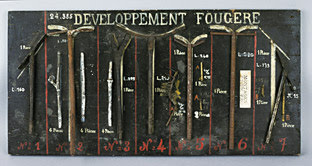In 1828 Dr. Auzoux founded a factory to produce models in his small hometown St.Aubin d'Ecrosville in Normandy, France, where he employed 60-100 workers of all ages and both sexes, whose main tasks were the moulding and painting of the models.
After an initial prototype of a model was sculpted by Auzoux himself, moulds were taken that served as the basis for potentially unlimited numbers of casts. Casts were produced by inserting layers of a secret papier-mâché mixture, containing cork and clay as well as paper and glue. For the upright models of humans and large animals and plants, internal metal structures were used to increase their stability. The papier-mâché parts were joined on to this metal core and were then painted, labelled, and varnished.



